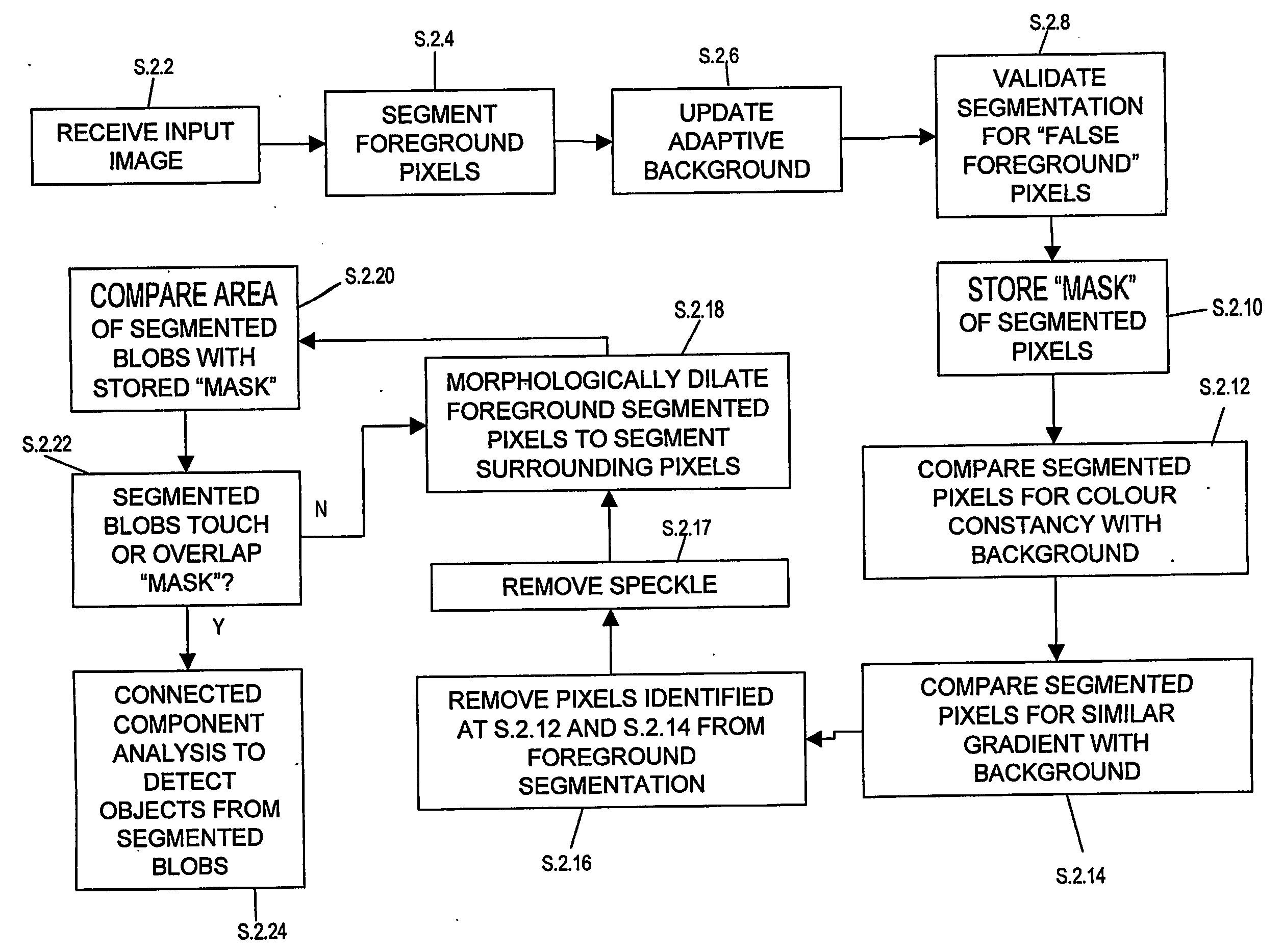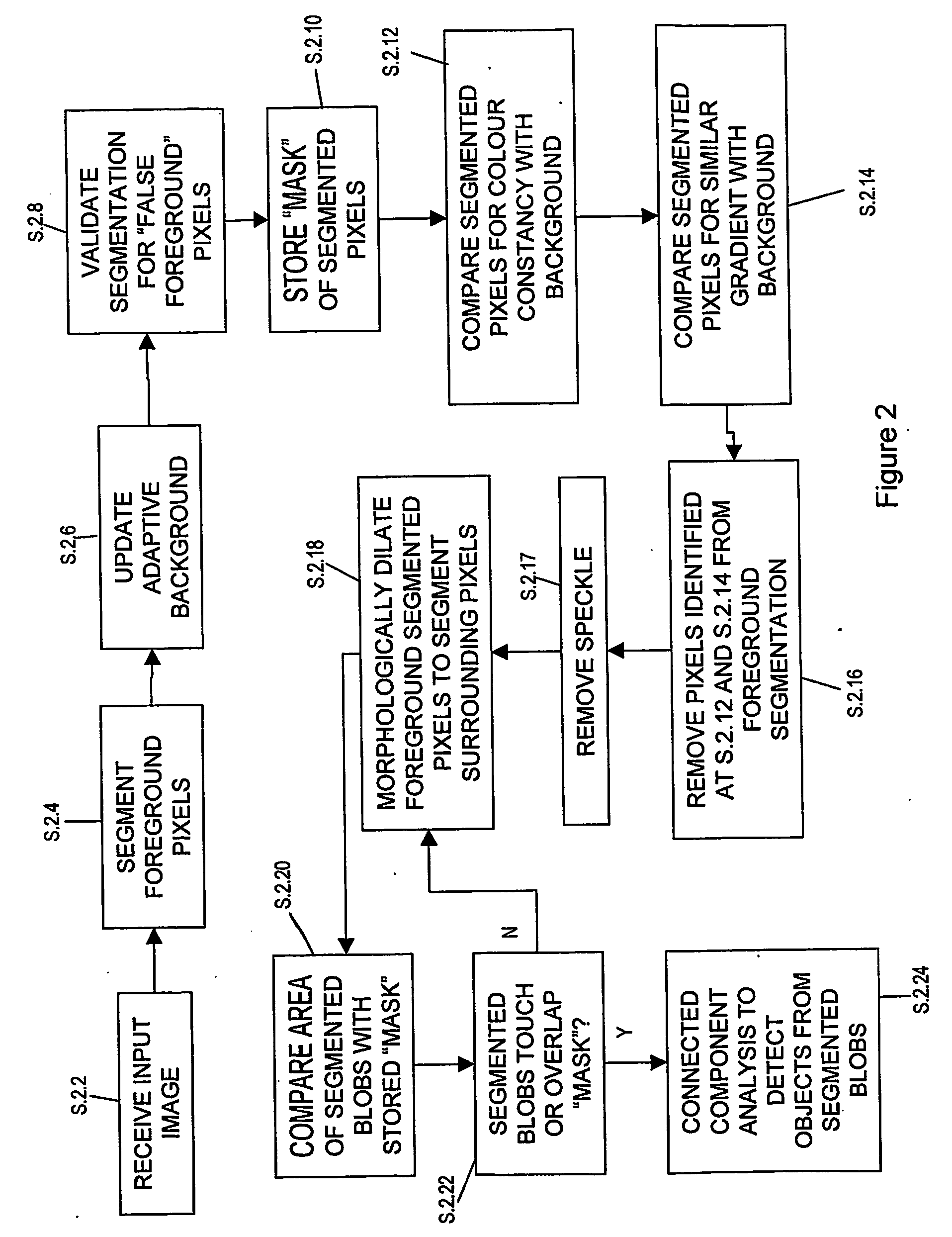Object detection in images
a technology for objects and images, applied in image enhancement, image analysis, instruments, etc., can solve problems such as failure of above-color constancy discriminators, mckenna et al. presenting problems, and inability to fill in by reference to rgb subtraction masks
- Summary
- Abstract
- Description
- Claims
- Application Information
AI Technical Summary
Benefits of technology
Problems solved by technology
Method used
Image
Examples
Embodiment Construction
[0040] An embodiment of the present invention will now be described with respect to the figures, and an example of the operation of the embodiment given.
[0041]FIG. 1 illustrates an example system architecture which provides the embodiment of the invention. More particularly, as the present invention generally relates to an image processing technique for detecting objects within input images, the invention is primarily embodied as software to be run on a computer. Therefore, the system architecture of the present invention comprises a general purpose computer 16, as is well known in the art. The computer 16 is provided with a display 20 on which output images generated by the computer may be displayed to a user, and is further provided with various user input devices 18, such as keyboards, mice, or the like. The general purpose computer 16 is also provided with a data storage medium 22 such as a hard disk, memory, optical disk, or the like, upon which is stored programs and data.
[0...
PUM
 Login to View More
Login to View More Abstract
Description
Claims
Application Information
 Login to View More
Login to View More - R&D
- Intellectual Property
- Life Sciences
- Materials
- Tech Scout
- Unparalleled Data Quality
- Higher Quality Content
- 60% Fewer Hallucinations
Browse by: Latest US Patents, China's latest patents, Technical Efficacy Thesaurus, Application Domain, Technology Topic, Popular Technical Reports.
© 2025 PatSnap. All rights reserved.Legal|Privacy policy|Modern Slavery Act Transparency Statement|Sitemap|About US| Contact US: help@patsnap.com



